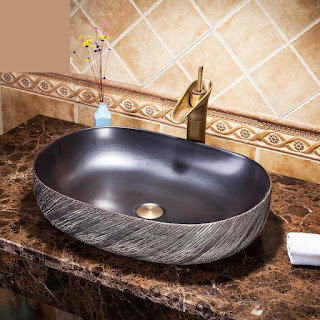POINTS TO CONSIDER WHEN CHOOSING WALL FOUNTAINS
Choosing a wall fountain is a big investment in your home or office. These features have a soothing sound that can help you to relax and calm down. It is crucial for you to take the time to ensure you are choosing the best wall fountain for your needs so that you won’t have any stress because of the wall fountains. A well chosen wall fountain is something that you can enjoy for a long time to come. An easy installation, easy care, and perfect fit can go a long way to help with your satisfaction after purchasing the fountain.
Indoor or Outdoor Wall Fountain
The first choice you will have to make when you are trying to pick out a wall fountain is whether it will be used indoors or outdoors. While it is often possible to use an outdoor fountain indoors, the opposite isn’t usually possible. Indoor fountains generally won’t be able to be used safely out in the elements. Once you decide if the fountain will be inside or outside, you can greatly narrow down your options. If you aren’t sure about whether you are going to place the fountain inside or outside, you can always just look at them all until you find the one that you want. You would then have to choose the location based on where the fountain is rated for use.
Safety Considerations
Now that you have chosen the wall fountain you like, or at least narrowed down the list, you will need to make sure that you have a safe place to mount it. Even if the wall fountain is a free-standing fountain, it will still need to be anchored down. If the wall fountain will be mounted on the wall, you must ensure that the wall can hold the weight of the fountain when it is filled with water. In most cases, this will require you to use special anchors to mount the water fountain. If the wall fountain is going to be used as a wall or room divider and will be free standing, you will need to anchor it to the floor. While this isn’t an issue if you have a concrete floor, people who have wooden floors should be sure that the floor can support the weight of the filled fountain. When you are trying to figure out if the wall or floor can hold the fountain, you might have to do some math. A gallon of fresh water weighs 8.34 pounds. You will have to multiply that by the capacity of the fountain. That will give you the weight of the water. From there, you need to add the weight of the fountain to the weight of the water so that you can find out the full weight that the wall or floor will need to hold.
Locations to Avoid
Placing the fountain can have a big impact on how often you have to clean the fountain and how much effort that will take. If possible, try to avoid placing the fountain in direct sunlight. That won’t always be possible if you are going to place the fountain outside, but it should be doable if you are going to place it inside. You must also pay attention to what is around the fountain. Because there is a very good chance that the water is going to splash out of the fountain as it is moving, the fountain shouldn’t be placed next to anything that can’t get a little wet. This means that placing right next to your big screen television wouldn’t be a good idea if the fountain is indoors. That doesn’t mean that the area is going to be soaking wet. Oftentimes, there wouldn’t be an accumulation of water that would be very obvious on nearby surfaces.
Wiring and Plumbing
Your fountain will need a power source and a water source. The way that it will get those varies depending on the fountain. The fountain can be solar powered, hard wired, plugged in, or battery operated. You have to think about what type of power will be available in the location in which it will be placed. For the plumbing, it can either be directly plumbed, temporarily plumbed, or filled by hand. A directly plumbed fountain will have a continuous influx of water. A temporarily plumbed fountain is one that can have a water hose connected directly to it. A hand-filled fountain is one that you will have to fill by hand. This is the most common type of fountain that is used indoors. It is possible that you will need a permit to have the wall fountain installed. This is usually the case if the fountain will be hard wired or directly plumbed. A quick call to the local code enforcement office can give you the answer about whether you will need a permit or not.
Think About Animals
Whether the fountain is indoors or outdoors, you should think about any animals that will come into contact with the fountain. Any wall fountain could be accessible to a pet that is able to get to it. Outdoor fountains could be easily accessed by wild animals. The water that you put into the wall fountain isn’t the issue here. The issue that can occur when animals have access to the fountain is what treatment you use for the water. You don’t necessarily have to use anything to treat the water; however, if you have a problem with algae, fungus, or other similar contaminants, you might decide that you need to treat the water between cleanings. If you do use treatments, make sure that the chemicals are safe for animals that have access to the water.









Comments
Post a Comment